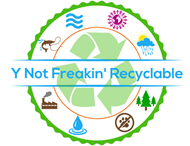[ad_1]

NASA satellites have provided more data than ever before on what has been happening to Antarctica and Greenland’s ice over the past 16 years with dire, if not entirely unexpected, findings. Both polar ice sheets are losing billions of tonnes of ice every year and adding to sea-level rise.
The results revealed that although there are small gains of ice in East Antarctica, they have been dwarfed by massive losses in West Antarctica, NASA reported. The net ice mass loss has led to almost half an inch of sea-level rise between 2003 and 2019 – just under a third of the total sea-level rise around the world in that time.
The findings were based on information from the space agency’s ICESat and ICESat-2 satellite laser altimeters – devices that use laser pulses to measure the elevation and thickness of ice sheets and help better understand global climate change.
The researchers concluded that ice masses from both Greenland and Antarctica will continue to contribute to sea level rise increasing over the next few decades. Greenland’s ice sheet lost an average of 200 gigatons of ice per year, and Antarctica’s ice sheet lost an average of 118 gigatons of ice per year, NASA reported.
One gigaton of ice would cover New York’s Central Park in ice more than 1,000 feet thick, to a height taller than the Chrysler Building, NASA said.
The study, published on Thursday in the journal Science, provided estimates of grounded and floating ice mass changes between 2003 and 2019.
Floating ice, well, floats: it’s already in the water and does not contribute to sea-level rise. Grounded ice has not yet reached the ocean but when ice shelves melt and fall into the ocean, it adds to sea-level rise.
“Quantifying changes in Earth’s ice sheets, and identifying the climate drivers, is central to improving sea-level projections,” the researchers stated.
The researchers believe that “competing climate processes” are going on in the Antarctic. Antarctica and Greenland are losing ice mass overall, but it is accumulating in some regions while disappearing from others.
In Greenland and Antarctica, “losses outpaced gains”, with West Antarctica’s losses accounting for over 30 pr cent of the region’s total. It was somewhat compensated in East Antarctica, where ice sheets were gaining mass from accumulated snow.
Source link
Y Not Freakin’ Recyclable Home
 Pollution Climate Change Holocene Deforestation Population Acidification Y Not Freakin' Recyclable
Pollution Climate Change Holocene Deforestation Population Acidification Y Not Freakin' Recyclable



